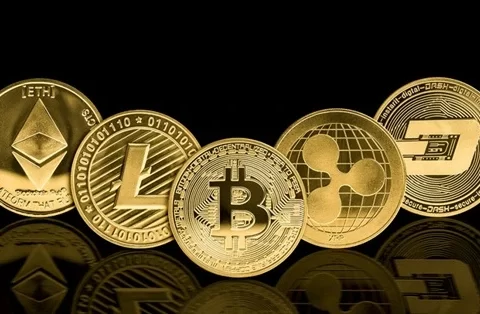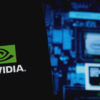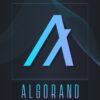
Cardano is a third-generation blockchain platform, known for its focus on sustainability, scalability, and governance. One of the key differentiators of Cardano from other blockchain networks is its well-structured governance and voting system. This system plays a crucial role in Cardano’s decentralized decision-making process, giving its community the power to propose, discuss, and implement changes. In this article, we will dive into the details of how Cardano’s governance and voting system operates, its benefits, and why it is pivotal to the blockchain’s future.
1. Cardano’s Governance Model: A Decentralized Framework
Governance on the Cardano network is built around the principle of decentralization, ensuring that decisions are made by the community rather than a centralized authority. Cardano employs a self-governance model where all stakeholders, including ADA holders, developers, and the Cardano Foundation, can participate.
The governance process is divided into the following key components:
- Project Catalyst: This is Cardano’s innovation fund, designed to drive development and innovation on the platform. It provides ADA holders the opportunity to propose projects, vote on them, and receive funding if the proposal is approved.
- Voltaire Era: This is the governance phase of Cardano’s development roadmap. During this era, the focus is on creating a self-sustaining system, where the network will be fully managed by its community.
2. Voting System in Cardano: Power to the Community
At the heart of Cardano’s governance is its voting system, which empowers ADA holders to influence the platform’s future. Voting is conducted through the Catalyst Voting App, which ensures that users can participate easily from their mobile devices. Here’s how the voting system works:
- ADA Stakeholders: To participate in governance, users need to hold ADA, the native cryptocurrency of the Cardano blockchain. The more ADA a user holds, the more weight their vote carries in decision-making.
- Proposals: Members of the community can submit proposals for new projects, changes to the network, or development funding. These proposals go through several phases, including community reviews, discussions, and improvements.
- Voting Process: Once proposals are submitted, ADA holders can vote on them during specific voting rounds. Each vote is weighted by the amount of ADA held by the voter. The more ADA a user holds, the greater the impact of their vote.
- Incentives: Voting is incentivized, meaning ADA holders can earn rewards by participating in governance. This encourages active participation from the community and ensures that more people are involved in shaping the future of Cardano.
3. Project Catalyst: Driving Innovation on Cardano
Project Catalyst is an essential part of Cardano’s governance framework, designed to foster innovation and drive the development of the Cardano ecosystem. It is the largest decentralized innovation fund in the world, with a significant amount of ADA allocated for funding proposals.
Through Project Catalyst, anyone can submit a proposal, whether it’s for technical upgrades, community projects, or DeFi applications. The community then votes on these proposals to decide which projects should receive funding. Over time, Project Catalyst has become a hub for developers, startups, and innovators, contributing to Cardano’s growth.
The Catalyst Proposal Stages include:
- Proposal Submission: Anyone can submit a proposal to Project Catalyst.
- Community Review: The Cardano community reviews and provides feedback on submitted proposals.
- Voting Phase: ADA holders vote on the proposals they believe should be funded.
- Funding: Winning proposals receive funding to carry out their projects.
4. Transparency and Accountability
Cardano’s governance and voting system is designed to be transparent. Every proposal, discussion, and voting result is available on the blockchain, ensuring that decisions are made in an open and accountable manner. This transparency is crucial for building trust within the community and ensuring that governance processes remain fair and effective.
5. Why Cardano’s Governance System is Important for the Future of Blockchain
The governance and voting system of Cardano is an example of how blockchain can operate in a fully decentralized way. Unlike other blockchains where governance may be controlled by a small group of developers or miners, Cardano’s model ensures that the power is distributed among its community. This structure encourages collaboration and continuous development while reducing the risk of centralization.
As blockchain technology evolves, governance will become a critical aspect of its sustainability. By giving power to the community, Cardano ensures that it can adapt, grow, and evolve based on the collective wisdom of its stakeholders.
6. Challenges and Future Improvements
While Cardano’s governance system is revolutionary, it’s still evolving. As more participants join the ecosystem and more proposals are submitted, the governance model may face challenges in scalability, voter participation, and proposal management. However, Cardano’s continuous focus on research and peer-reviewed improvements ensures that these challenges will be addressed over time.
The future of Cardano’s governance is bright, with upcoming developments aimed at improving the voting process, enhancing the user experience, and ensuring that all voices are heard in the decision-making process.
Conclusion
Cardano’s governance and voting system is a fundamental aspect of its mission to build a decentralized and self-sustaining blockchain ecosystem. By empowering ADA holders to vote on proposals, fund projects, and drive innovation, Cardano ensures that its future is shaped by its community. As blockchain governance continues to evolve, Cardano remains a leader in showing how decentralization and transparency can work hand-in-hand for the betterment of the ecosystem.











